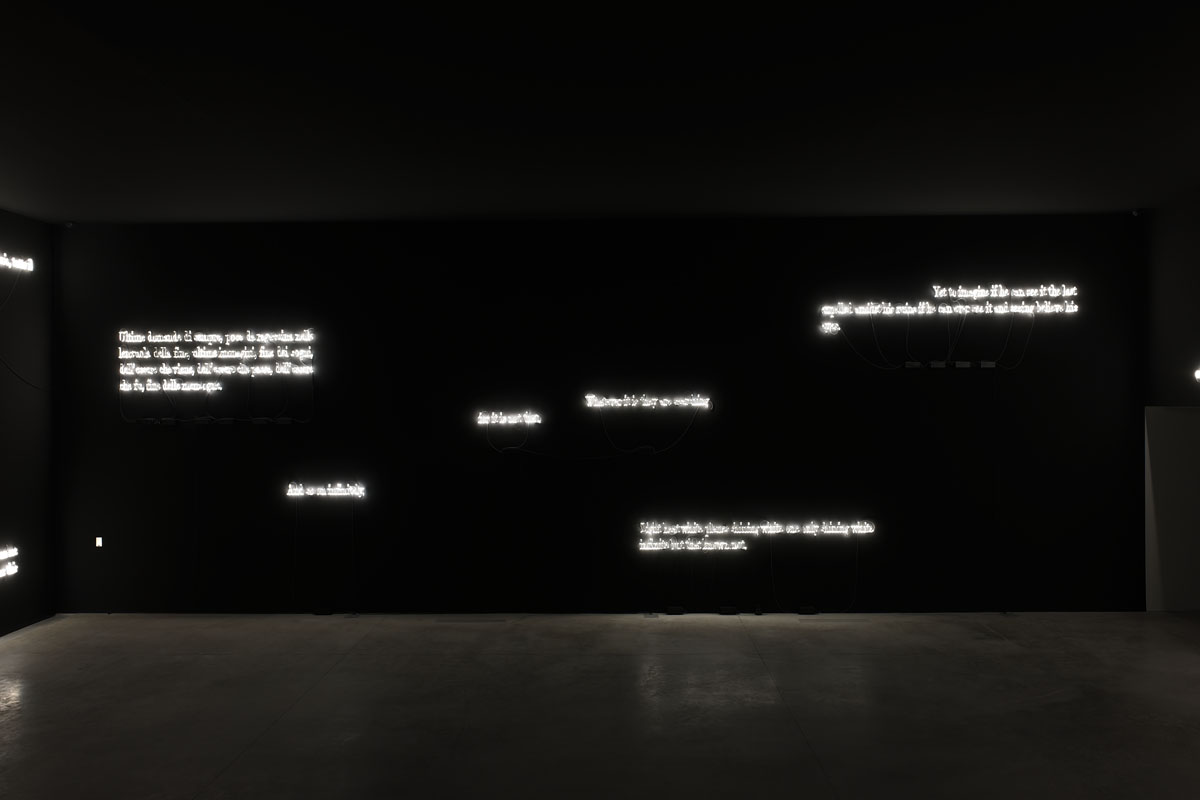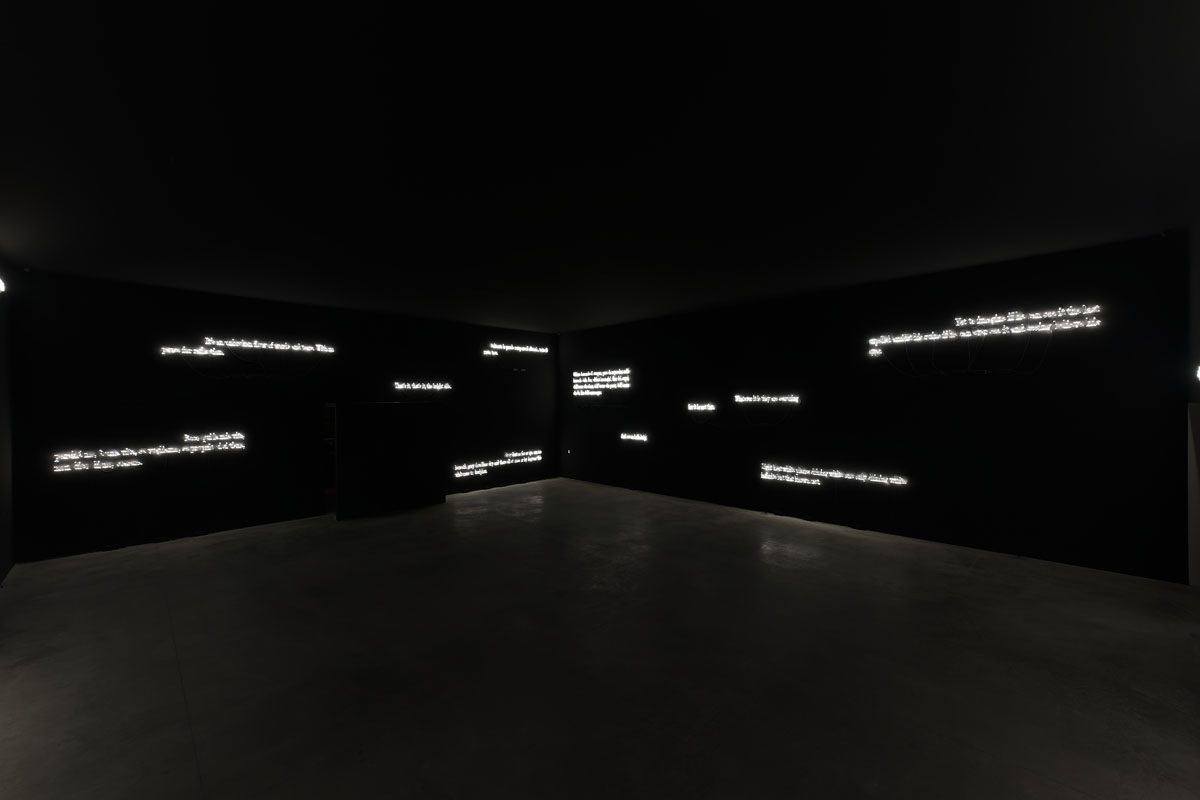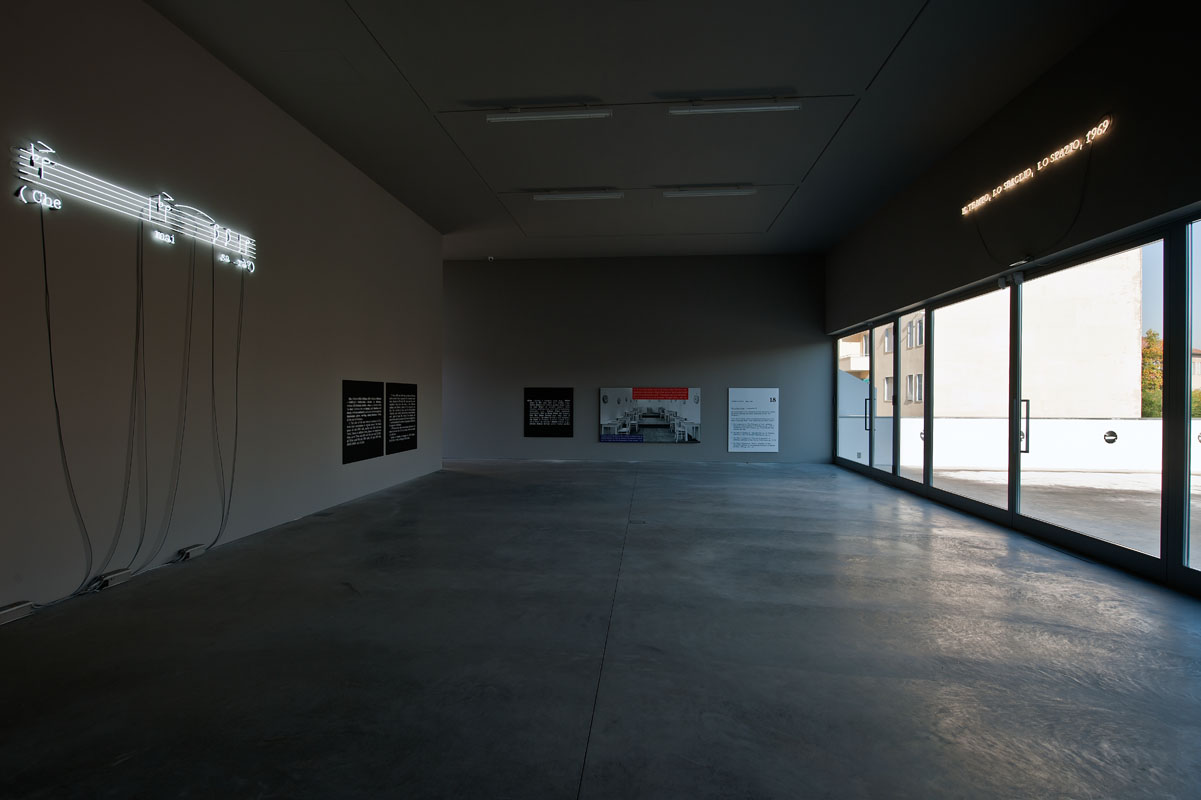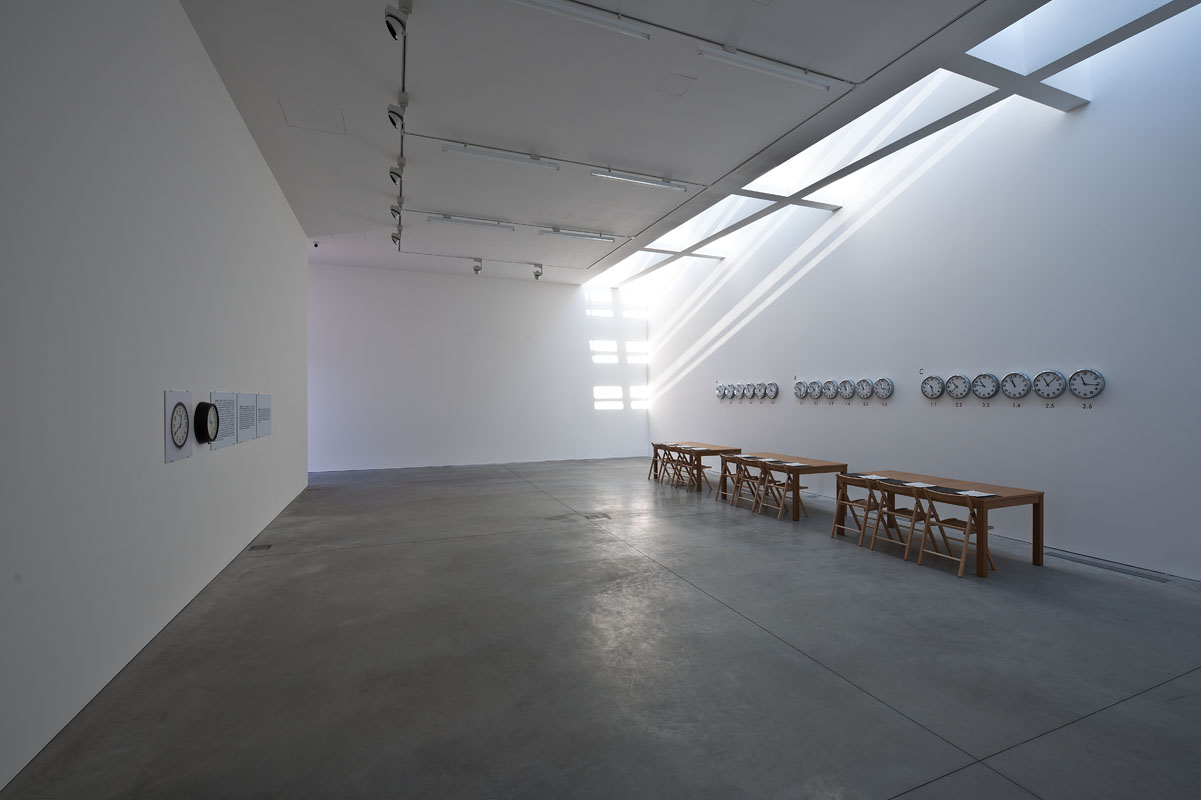Lia Rumma Gallery is very pleased to announce a major exhibition by Joseph Kosuth. The exhibition of new works conceived for the main ground floor space is presented as an installation titled ‘Texts for Nothing’ Samuel Beckett, in the play together with ‘An Uneven Topography of Time,’ a selection of historical works shown on the first and second floors. The installation work ‘Texts for Nothing’ Samuel Beckett, in play is comprised of 19 individual text works, both in English and Italian, fabricated in blacked-out warm white neon and installed floor to ceiling in a matte black space. The installation is based on particular texts, from Samuel’s Beckett’s ‘Texts for Nothing.’ Abandoned for years by the major critics of Beckett’s work and rarely included in the anthologies of his work, ‘Texts for Nothing’ was seen as outside of the mainstream of Beckett’s writing. The work has often been viewed as a pause in the oeuvre of Beckett, for Kosuth, these texts are quintessential Beckett, a consummate example of his particular artistic integrity. Beckett’s project as an artist was in one important way parallel to that of Kosuth: both practices manifest concern with meaning. Beckett approaches the question of meaning from the absence of meaning rather than, as Kosuth does, from questions concerned with the production of meaning. Beckett for Kosuth reflects some of the origins of his own practice. There can’t be much doubt as to how this work has come about and its reverberation in Kosuth’s intentions. ‘Texts for Nothing’ is the least narrative of all of Beckett’s writing and the most useful for Kosuth as material for his practice. For both artists it is work that only begins, it does not end. Constituting language itself, it is self-described as an absence, an absence from which our questions about meaning can proceed. On the first and second floor of the gallery is ‘An Uneven Topography of Time,’ an exhibition drawn from the historical works of Joseph Kosuth. The exhibition covers a period of over 40 years and is based on the subject of time found within his works throughout this period. This part of the Joseph Kosuth exhibition functions almost as the artist’s very own self-reflexive timeline, one that includes Beckett’s own referencing of empty time as well as a comment on Kosuth’s long-lasting professional relationship with the gallery. Lia Rumma invited Kosuth to exhibit in her very first gallery show ‘The Eighth Investigation (A.A.I.A.I.)’ that inaugurated the gallery in Naples in 1971. The subject of time has remained a leitmotif between them ever since. Joseph Kosuth is one of the pioneers of Conceptual art and installation art, initiating language-based works and appropriation strategies in the 1960s. His work has consistently explored the production and role of language and meaning within art. His nearly forty-year inquiry into the relation of language to art has taken the form of installations, museum exhibitions, public commissions and publications throughout Europe, the Americas and Asia, including five Documenta(s) and seven Venice Biennale(s). Awards include the Brandeis Award, 1990, the Frederick Weisman Award, 1991, the Venice Biennale Menzione d'Onore, 1993, and the Chevalier de l'ordre des Arts et des Lettres from the French government in 1993. Kosuth was awarded a Cassandra Foundation Grant in 1968, as the choice of Marcel Duchamp one week before he died. In 1999, a 3.00 franc postage stamp was issued by the French Government in honor of his work in Figeac. In 2001, he received the Laurea Honoris Causa, doctorate in Philosophy and Letters from the University of Bologna. In 2003, Kosuth received the Austrian Republic’s highest honor for accomplishments in science and culture, the Decoration of Honour in Gold. In 2009, Kosuth’s exhibition 'ni apparence ni illusion,' an installation work throughout the 12th-century walls of the Louvre palace, opened at the Musée du Louvre in Paris and will become a permanent work in October 2012.
Joseph Kosuth
'Texts for Nothing' Samuel Beckett, in play
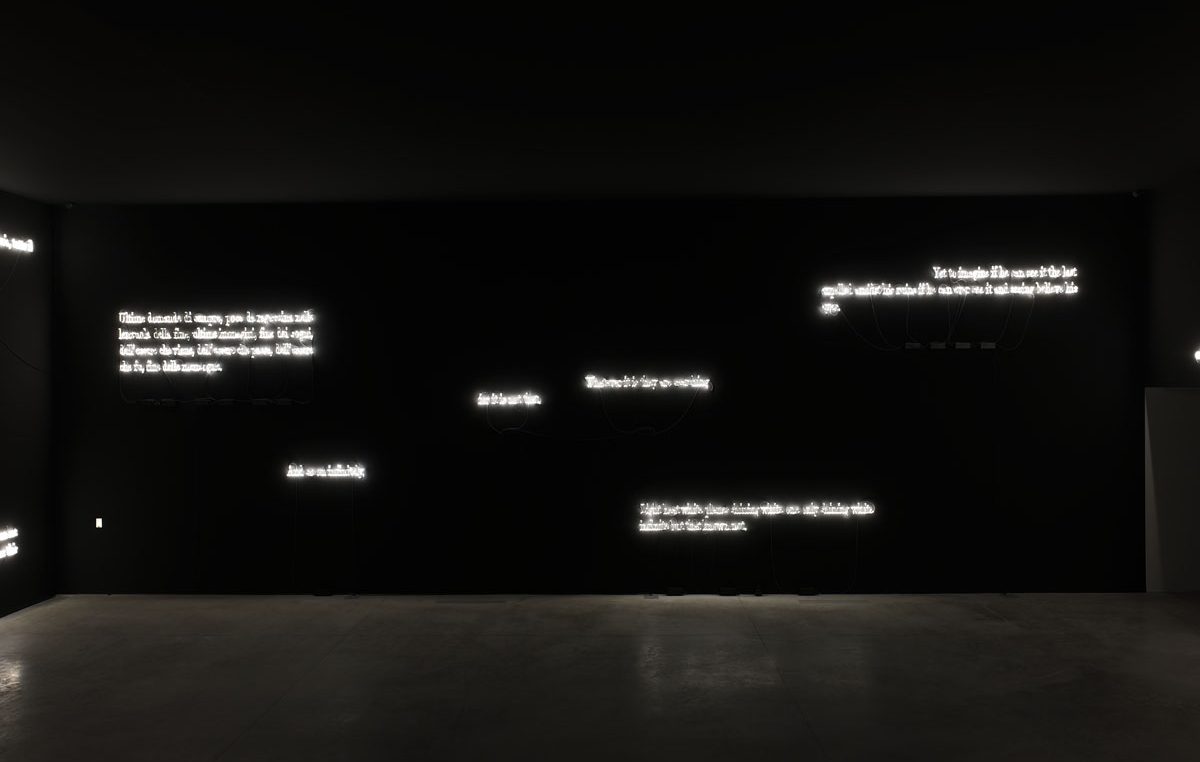
Photo Gallery
L'artista
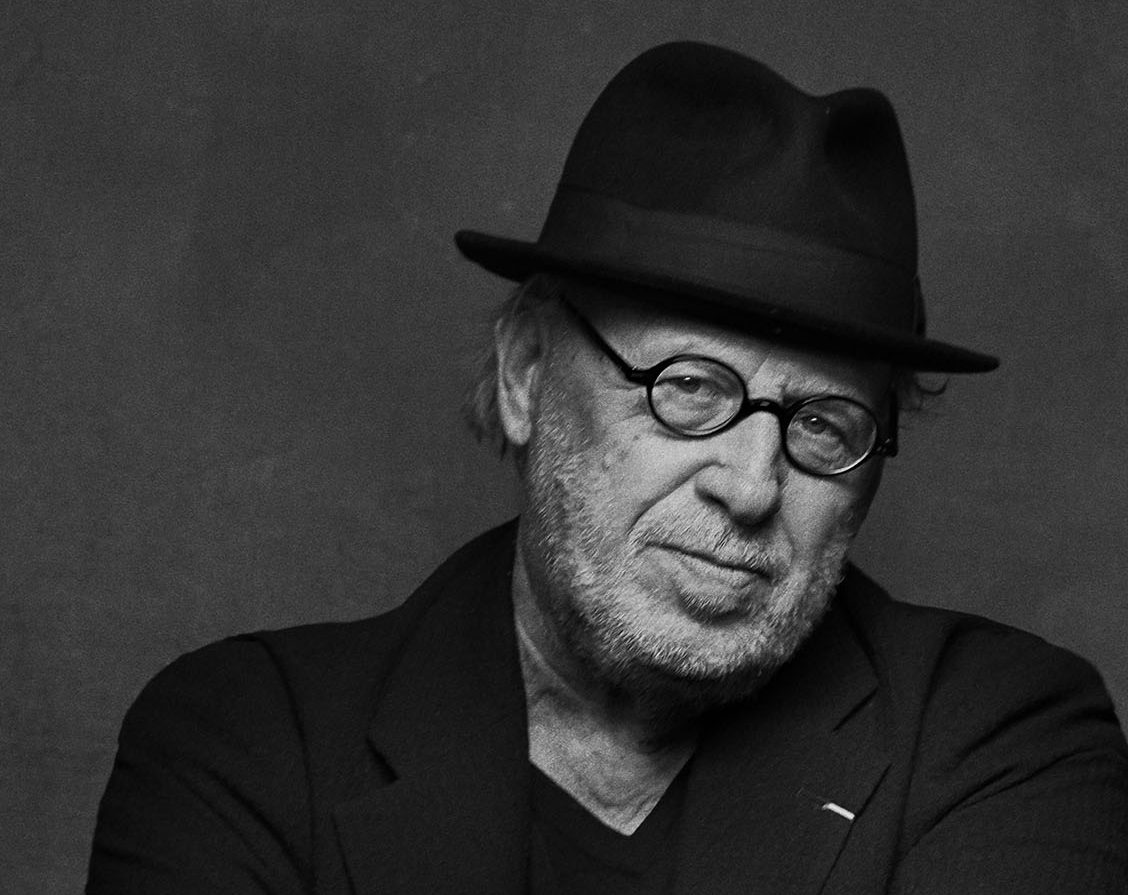
Joseph Kosuth (b 1945, USA) is one of the pioneers of Conceptual art and installation art, initiating language based works and appropriation strategies in the 1960s. His work has consistently explored the production and role of language and meaning within art. His more than fifty year inquiry into the relation of
